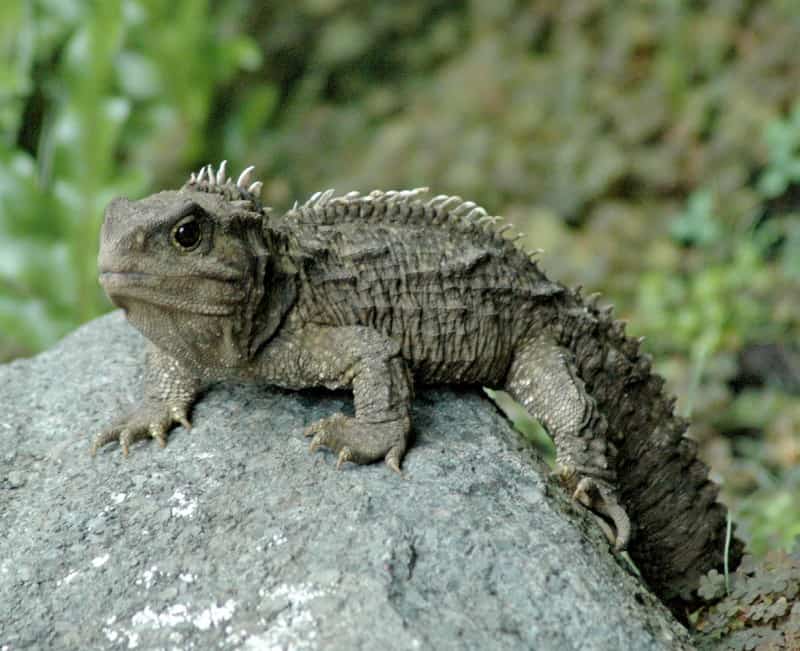
Tuatara Facts
- First of all, the amazing Tuatara represents a reptile endemic to the country of New Zealand, located near Australia. Physiologically, the remarkable animal remains the most primitive species of reptile known to man.
- Furthermore, taxonomic studies also determined that it underwent numerous evolutionary adaptations over time. However, its basic physiology still remains the closest to its Mesozoic Era ancestors of any known species existing today.
- Previously, most scientists believed that two species of Tuatara existed. But, subsequent data later determined that only one did. However, in 1885, researchers also determined that another species once existed, but died out.
- Both extant species of this animal now list as functionally extinct on the New Zealand mainland. Finally, the only known population of this unique creature resides within the confines of the protected and monitored Karori Sanctuary.
Related Articles
Tuatara Physical Description
First of all, the incredible Tuatara display a moderate degree of sexual dimorphism. The males typically grow about one-third larger than the females. Males average roughly 24 in (61 cm) long and 2.2 lb (1 kg) in weight. Meanwhile, females average about 18 in (45 cm) in length, and 1.1 lb (0.5 kg) in weight.
In color, the remarkable and surprising creature also generally appears a greenish brown. But, this frequently alters over time, however. In fact, individuals do this to adapt to the specific surroundings in their range.
The Tuatara also possesses one extremely unique physical characteristic. That holds true because it actually possesses a third eye. This amazing organ remains known as the parietal eye and sits on top of the head.
However, the eye only appears visibly on the young. That’s because after 4-6 months, it becomes covered in opaque, yet pigmented, scales. It actually retains its functionality, though its precise purpose remains unknown.
- Kingdom: Animalia
- Phylum: Chordata
- Class: Reptilia
- Order: Rhyncocephalia
- Family: Sphenodontidae
- Genus: Sphenodon
Tuatara Behavior and Status
The adult Tuatara remains a terrestrial animal. It also appears primarily nocturnal in nature, though it will frequently bask in the sun. Hatchlings typically seem diurnal and spend the majority of their time hiding under logs and rocks.
Researchers believe that this behavior remains principally due to the fact that adult Tuatara often shows cannibalistic tendencies. Though not toxic, individuals also tend to be rather aggressive and it possesses a powerful bite for a creature of its size.
Aside from the Karori Preserve, it now appears to be extinct on the mainland, however. Its known population now only inhabits 32 small islands which continue to be free of competing mammals.
However, for the moment, it still remains numerous on these islands. This surprising fact is attributed to the fact that the islands are quite inhospitable. Therefore, humans rarely venture to them, aside from researchers.
Species Sharing Its Range
Check out our other articles on 7 Stunning European Flowering Plants, Giant Trevally, Prince Edward Island, Mountain Chicken, Saiga Antelope, Hyacinth Macaw, Hermann’s Tortoise
